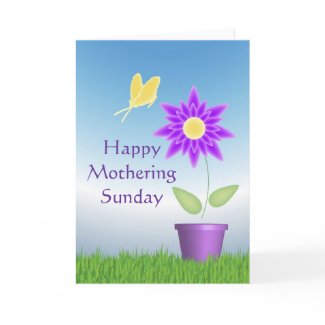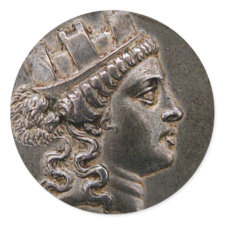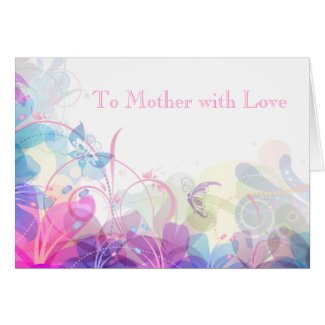If you’re British or are familiar with British customs, you’ll know that in the UK there is a different date for Mother’s Day celebrations than in the States. What’s more, traditionally the British day of celebration is not known as Mother’s day, but rather as Mothering Sunday. With all these differences, it’s not surprising that the history of Mothering Sunday is a very different one from the American Mother’s Day. This article explores the story behind the origin of Mothering Sunday.
When is Mothering Sunday?
Whilst the American Mother’s Day which occurs in May, Mothering Sunday usually takes place in March. The exact Mothering Sunday date is always the fourth Sunday of Lent, which means that it falls on slightly different days each year. If you want to pencil it into your diary, Mothering Sunday falls on the following dates in the coming years:
- 2012 :: 18 March
- 2013 :: 10 March
- 2014 :: 30 March
- 2015 :: 15 March
- 2016 :: 6 March
Why is Mothering Sunday celebrated on this date?
Historical records seem to suggest that Mothering Sunday has been celebrated on the fourth Sunday of Lent since at least the 16th century, however, it is likely that it was celebrated long before then because the history of its celebration may well date far earlier than this.
To further understand its allocated date of celebration, let’s journey into the history of Mothering Sunday.
The first Mothering Sunday may have been for a Greek or Roman mother goddess
Some suggest that the modern British Mother’s day celebrations evolved from a far earlier pagan celebration of a different kind of mother: a mother goddess.
Many early civilizations had a “mother goddess” figure that was honored and celebrated at certain times of the year. In Ancient Greece the Mother of the Gods (or the Magna Mater) was called Rhea, and it may be that celebrations held for this goddess around the 6th century BC were the earliest form of “Mother’s day” celebrations.
Later, around the 3rd century BC, the Greek traditions were adopted by Ancient Romans, and similar celebrations took place in honor of Rhea’s Roman equivalent, the mother goddess, Cybele. Interestingly enough, the celebrations for Cybele occurred in March, around the same time that we celebrate Mothering Sunday today.
Romans celebrated Cybele in a festival called: Hilaria. Why did they celebrate on this particular date in March? Because it was around the time of the Vernal Equinox, (where Vernal Equinox literally means: Vernal = Spring; Equinox = equal night and day). It was a celebration of the first day which had a longer day than night, marking the end of the gloomy winter, and the onset of a more joyous, sunny spring.
From “Mother’s day” celebrations of Mother goddesses to celebrations of the Holy Mother and the Mother Church
Many festivals celebrated by the Ancient Romans were converted into Christian celebrations when Christianity became the dominant religion of the Roman Empire and of most of Europe. This adaptation of existing Roman festivals was done to help the people adapt more easily to the new Christian religion.
The Roman festival of Saturnalia became Christmas, the Roman celebrations of Juno Februa and Lupercalia eventually became Saint Valentine’s Day, and although the evidence is not unequivocal, it is possible that Cybele’s Hilaria celebrations became Mothering Sunday. In order to make the festival more Christian, the heads of the church may have deemed this “mother goddess” celebration to be an appropriate time at which to replace pagan customs with their own, honoring Mother Mary and the Mother Church. (Mother Church was the term given to the biggest church in the area, often where local Christians would have been baptised.) The date of the celebration was also Christianized to relate directly to Easter and Lent, setting the date of this new festival to fall on the fourth Sunday of Lent. The church services held on this day are likely to have been themed around a Motherly theme, talking about Mary’s maternal love, and of maternal love in general.
Mother Church congregations became an occasion for family reunions with an emphasis on the maternal member of the family
By the 16th century, it was customary to visit the Mother Church for a special service on Mothering Sunday. Visiting the Mother Church on this day was colloquially known as “going a-mothering”.
Although this was a holy day and had little to do with celebrating mothers in any way, the congregating of people at their Mother Church celebrated the joyous coming together again of families. In those days it was common for children as young as ten to be put to work as apprentices, maids and domestic servants, working and living in various country manors, sometimes a fair distance from home. Being given a day off for a reunion with their mothers (and the rest of the family) was an exciting occasion (particularly since some sources suggest that for many working children this was amongst the only days off they had).
On their way home from their work posts, some children would pick flowers to give as a gift to their mothers.
Others would bring home a cake from the manor house where they worked. The most common cakes that were thought to have been made were fruit cakes known as simnel cakes, which are to this day the traditional Mothering Sunday cake that is made.
In some churches, the happy reunion was integrated into the Mother-themed church service where the spring flowers that were picked by the children would be blessed by the church before being presented to the mothers. To this day, flower bouquets are amongst the most common gifts given to mothers on Mothering Sunday.
By the 1940s Mothering Sunday Traditions underwent a transformation to resemble the American Mother’s Day
Somewhere along the line between the 16th century and the early 20th century, Mothering Sunday celebrations began to fade and celebrations became more subdued. But around the 1940s two main things occured which led to the revival of Mothering Sunday and its rebirth as the official Mother’s day celebration we know today:
The first thing that happened was that in the United States, a lady called Anna Jarvis campaigned for an American celebration of mothers throughout the country. Her success resulted in the first national American celebration of Mother’s Day in 1908. Some of her enthusiasm made its way to Britain to a woman called Constance Penswick-Smith who, inspired by Anna Jarvis, campaigned for the closest British equivalent Mother’s day celebration, Mothering Sunday, to be revived. Constance’s Mothering Sunday Movement campaign lasted a good few years, all the way from 1914 to the early 1920s. Although this served to prick up a few ears, nothing much changed in Britain. What did make a huge impact on the resurgence of celebrating Mothering Sunday in Britain, was the second event that happened around this time: World War II.
During World War II, English, American and Canadian soldiers worked alongside one another and had a chance to socialize and talk. One thing that they all had in common was missing their mothers, wives and girlfriends back home. With this newly realized appreciation for their mothers in the darkness of war, at some point (perhaps even on American Mother’s day itself) conversation turned to the American tradition of celebrating Mother’s Day. Inspired by the American celebrations, the British soldiers brought back with them a new found eagerness and desire to celebrate their mothers using the closest thing they had to Mother’s Day: Mothering Sunday.
By the 1950s, Mothering Sunday was once again celebrated throughout Britain with great enthusiasm; an enthusiasm that may have been helped by the exuberant marketing of the festival by merchants selling Mother’s Day related gifts.
A merging occurred between new American traditions and old Mothering Sunday traditions as British mothers began being shown love and appreciation on Mothering Sunday. The merging of traditions was so strong that people even began calling Mothering Sunday, “Mother’s Day”.
Today many people believe that Mothering Sunday and Mother’s Day are one and the same thing, and although the two celebrations have distinctly different origins, they share the same principles at their core: a celebration and appreciation of mothers, be they holy, human or otherwise.

Other articles that may interest you
Check out more articles in our culture section including:
- Why do we have birthday cakes? A Short History of Cakes
- Why do we have the engagement and wedding ring custom?
- Why do people go on honeymoons? And why is it called a honeymoon?
Related Products














